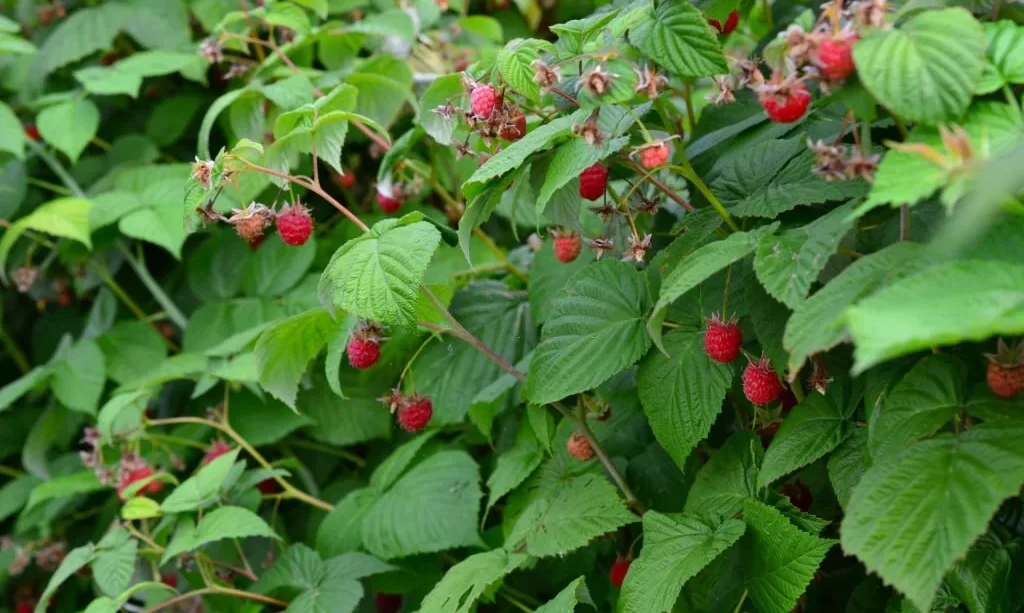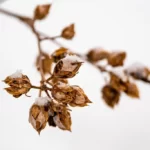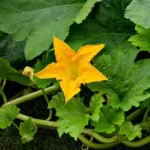Raspberry bushes are a delightful addition to gardens, orchards, and even the wild landscape. Known for their delicious and juicy fruits, these bushes hold a special place in the hearts of many gardeners and foragers. Recognizing what a raspberry bush looks like is the first step in successfully growing and enjoying these delectable berries. In this visual guide, we will explore the characteristics that make raspberry bushes unique and unmistakable. Whether you’re a novice gardener or a seasoned berry enthusiast, this article will help you identify raspberry bushes and appreciate their beauty in both cultivated and natural settings.
- It is fully rooted in the soil and can be planted immediately upon arrival, weather permitting. Planting and how-to-care instructions will arrive with shipment.
- For Best results, plant in used zones 5-9. Mature Height is 2-3ft, mature spread is 3-4ft.
- Thornless Raspberry bush that can produce quality fruit in mid summer. Plant is not guaranteed to arrive with fruit on it.
- Grows well in full sun.
- Plant will be dormant (no leaves) late fall through the winter months, this is normal. It will leaf out in spring.
Raspberry Bush Characteristics
Raspberry bushes possess several distinctive characteristics that set them apart from other plants in your garden or the wild:
- Height and Growth Habit: Raspberry bushes typically stand between 3 to 6 feet tall, depending on the variety. They can have an upright, arching, or trailing growth habit, creating a distinct appearance.
- Deciduous Nature: Raspberry bushes are deciduous, meaning they shed their leaves in the fall and go dormant in winter. This seasonal change is an essential characteristic to recognize.
- Leaves: Raspberry leaves are compound, consisting of three to five leaflets. They are typically green on the upper side, with a lighter green hue underneath. The edges of the leaves are serrated or toothed, adding to their unique look.
- Canes: Raspberry canes are the woody stems that bear the fruit. They have a brownish color and a slightly rough texture. First-year canes, known as primocanes, are typically green, while second-year canes, called floricanes, have a brownish tint, especially toward the base.
- Flowers: Raspberry bushes produce small, white or pale pink flowers. These blossoms have a cup-like shape with five delicate petals, contributing to the bush’s aesthetic appeal. Understanding these characteristic features will enable you to identify raspberry bushes confidently, whether you encounter them in your garden or out in the wild.
Leaves of a Raspberry Bush
The leaves of a raspberry bush are a key element in its identification. They exhibit the following characteristics:
- Compound Structure: Raspberry leaves are compound, consisting of multiple leaflets. Usually, you’ll find three to five leaflets arranged along a central stem.
- Green Color: The upper side of the leaves is typically a vibrant green, contributing to the overall lush appearance of the bush.
- Contrasting Undersides: Turn a raspberry leaf over, and you’ll notice a lighter green or grayish color on the underside. This contrast is helpful in distinguishing raspberry leaves from other plants.
- Serrated Edges: Raspberry leaflets have serrated or toothed edges, adding to their distinctive appearance. These serrations are relatively fine and evenly spaced along the leaflet margins.
Raspberry Canes
Raspberry canes are the structural framework of the bush and play a crucial role in fruit production. Here are key characteristics of raspberry canes:
- Woody and Brownish: Raspberry canes are woody in nature and usually have a brownish color. This woody texture distinguishes them from herbaceous plants.
- Texture: Run your fingers along a raspberry cane, and you’ll notice a slightly rough or bumpy surface, particularly on older canes.
- Yearly Growth: Raspberry canes exhibit a biennial growth pattern. First-year canes, called primocanes, are typically green and devoid of fruit. Second-year canes, known as floricanes, bear fruit and exhibit a brownish tint, especially near the base. Recognizing the difference between these two types is essential for proper pruning and fruit management.
Raspberry Flowers
Raspberry flowers are a prelude to the delectable berries they eventually produce. Their characteristics include:
- Color: Raspberry flowers are small and delicate, typically white or pale pink. The soft pastel hues of these flowers make them stand out against the green foliage.
- Petals and Shape: Raspberry blossoms have five petals, forming a cup-like shape. This shape is a distinctive feature that sets them apart from other flowers.
- Clustered Arrangement: Raspberry flowers grow in clusters or inflorescences along the canes. These clusters are a sign of potential fruit-bearing locations.
Recognizing these characteristics of raspberry leaves, canes, and flowers is not only valuable for identifying raspberry bushes but also for effectively caring for and maintaining them. With this knowledge, you can enjoy the beauty of raspberry bushes and harvest their flavorful fruits with confidence.
Raspberry Fruit
The culmination of a raspberry bush’s growth is the production of its delectable fruit. Here’s what you need to know about raspberry fruits:
- Fruit Colors: Raspberries come in various colors, with red and black being the most common. Red raspberries are perhaps the most familiar, while black raspberries have a deeper, dark hue.
- Distinctive Shape: Raspberry fruits are typically round or conical, forming clusters or drupelets that are loosely attached to a central core. This unique structure contributes to their unmistakable appearance.
- Taste: Raspberries are known for their sweet-tart flavor profile. When ripe, they are juicy and bursting with delightful berry goodness.
How to Identify Raspberry Bushes in the Wild
Identifying raspberry bushes in the wild requires some additional considerations:
- Habitat: Raspberry bushes thrive in various environments, including fields, woods, and along roadsides. Look for them in sunny to partially shaded areas with well-draining soil.
- Fruit Season: The presence of ripe berries in late summer or early fall is a telltale sign of raspberry bushes in the wild.
- Leaf and Flower Characteristics: Observe the compound leaves with serrated edges and the white or pale pink, cup-shaped flowers that are typical of raspberry bushes.
- Thorny Canes: Be cautious when approaching wild raspberry bushes, as they often have thorny canes. Wear gloves when foraging to avoid getting pricked.
Conclusion
In conclusion, understanding what a raspberry bush looks like is not only a valuable skill for gardeners but also for those who enjoy foraging for wild berries. Recognizing the distinctive characteristics of raspberry leaves, canes, flowers, and fruits is your ticket to successfully identifying and appreciating these versatile plants.
Whether you cultivate raspberry bushes in your garden or encounter them in their natural habitat, their unique appearance and delicious fruits make them a delightful addition to any landscape. By being attentive to their visual cues, you can savor the bounty of raspberries and enjoy the beauty they bring to your surroundings.





